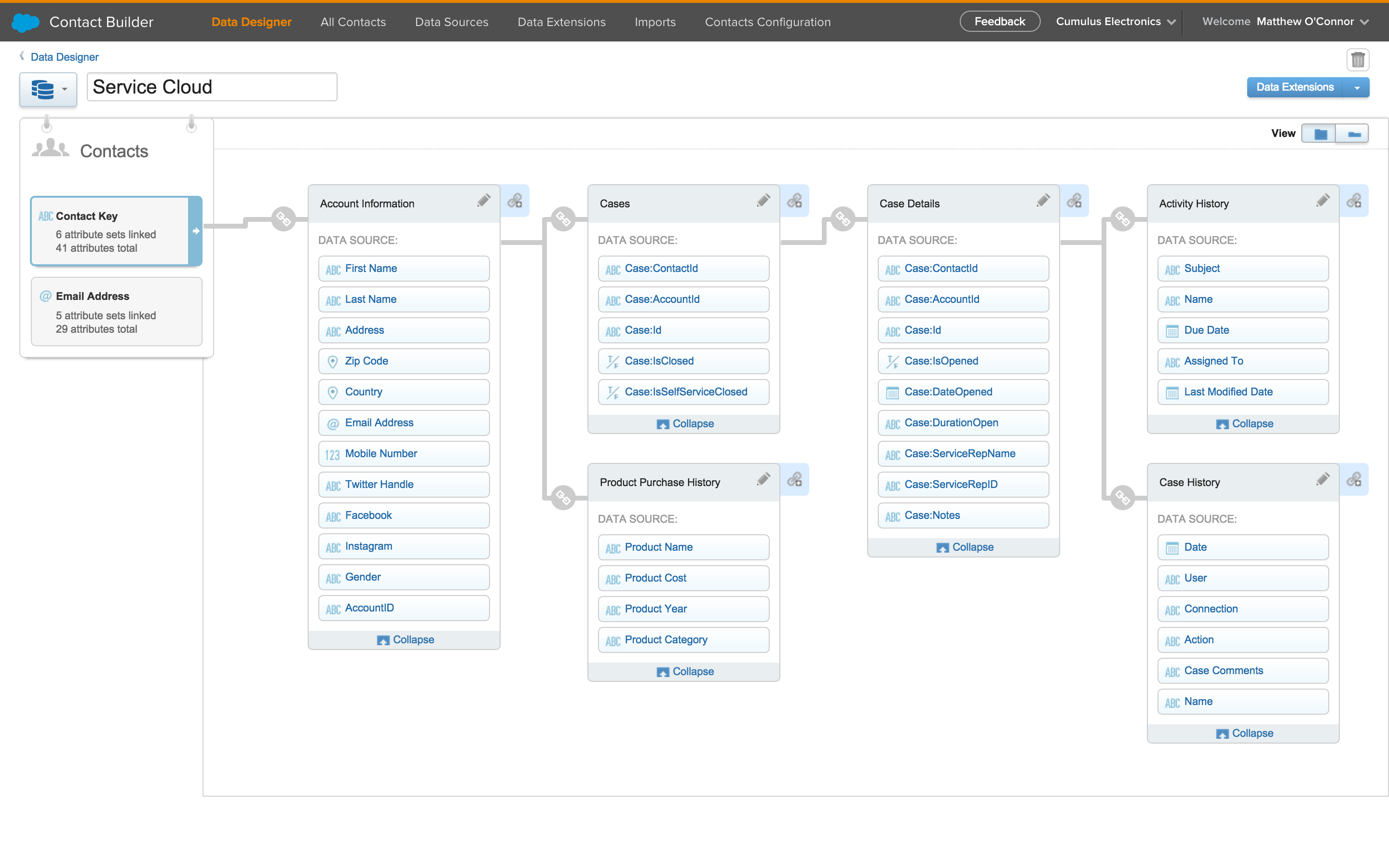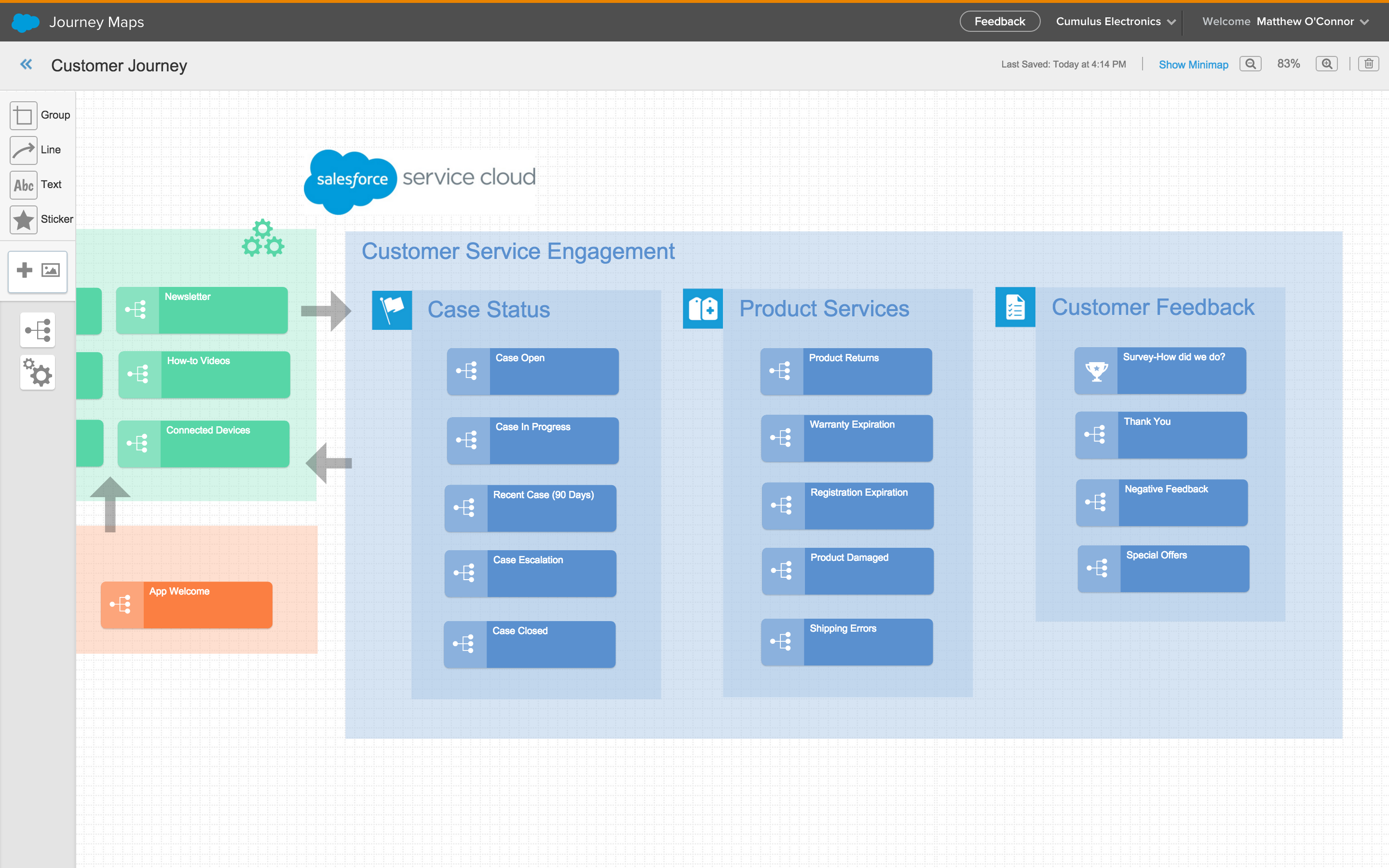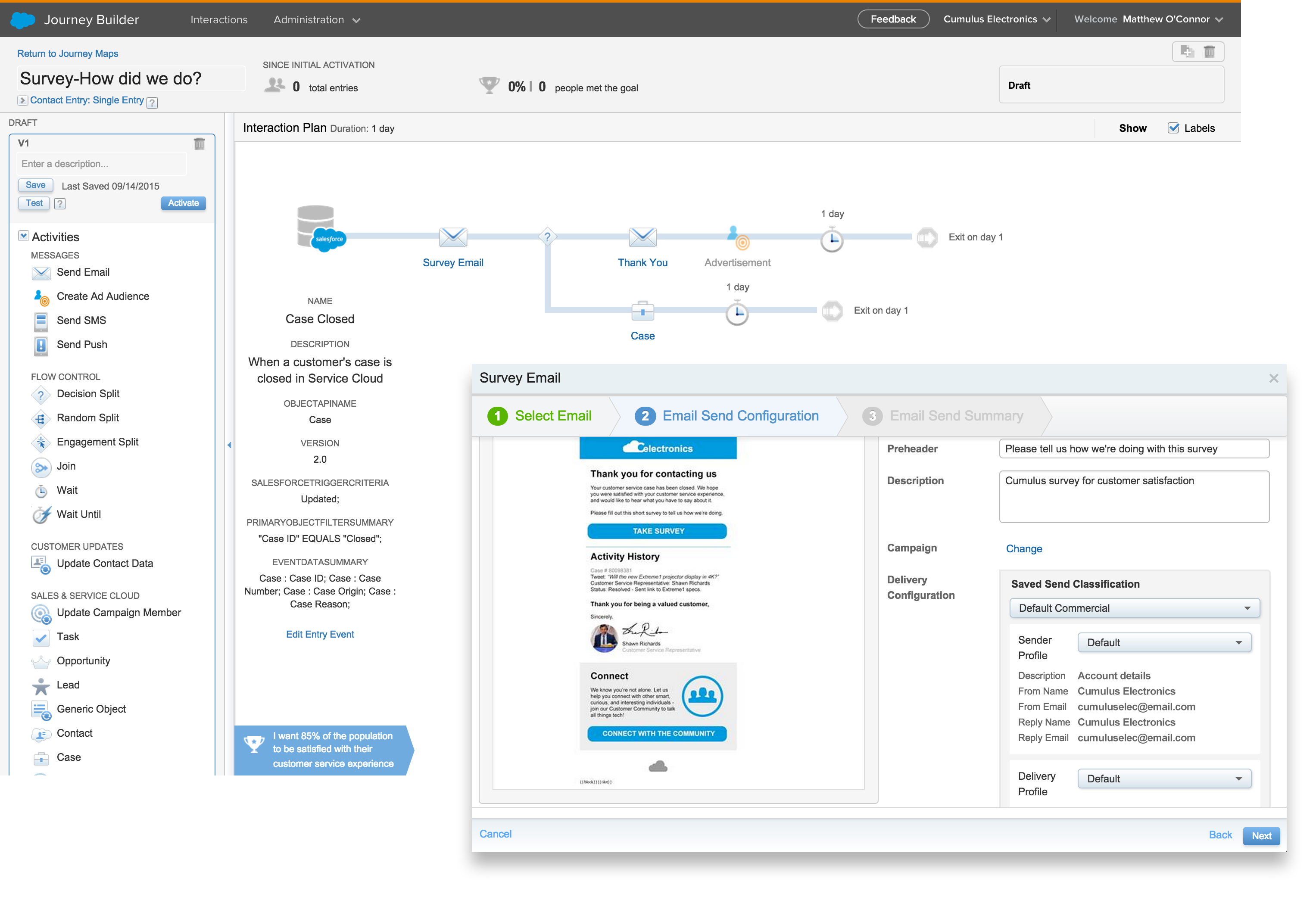
Get your FREE 30-day trial.
Please complete all fields.
A lot of organizations believe they have a 360-degree view of the customer. What they fail to realize is that marketing holds 80 degrees, customer service has 80 degrees, and sales owns 80 degrees. Then they wonder why it’s hard to provide a cohesive customer experience throughout the lifecycle.
To overcome these barriers, organizations must find ways to unlock their data from functional silos--then use it to drive customer engagement. But it takes more than sharing data; it requires an enterprise-wide view of how, when and why every interaction with the customer occurs. While many have achieved this objective within areas like sales, service and marketing, that’s where it has remained. Until now.
Marketing Cloud Connect seamlessly connects the journey management capabilities of the Salesforce Marketing Cloud with every customer interaction across sales, service and more. It allows organizations to create a single customer relationship, and empowers them to deliver more data-driven, personalized conversations.
To see how Marketing Cloud Connect makes it easy to engage customers in 1-to-1 communications regardless of where they are in the lifecycle, let’s check out a scenario.
Suppose your organization’s service team is experiencing a decline in customer satisfaction scores. As a marketer, you’re concerned about advocacy. Along with your support colleagues, you agree that the best strategy is to measure the satisfaction of every customer as soon as their case is marked as resolved within Service Cloud.
Marketing Cloud Connect makes it easy to understand your customers’ complete relationship with your brand. It enables you to consolidate your enterprise data and keep it in sync at all times. This example shows attributes captured by marketing right along side the customer’s purchase and service history—aligning the data you need to communicate with those who recently closed a service case.

With your data in place, Marketing Cloud’s Journey Builder equips you to plan your complete engagement strategy. Here, you’ve mapped multiple ways to interact with customers who have recently engaged with service. To ensure customers are satisfied, you’ve included a step to survey customers as soon as their case is closed.

Because your data is continuously synced with Service Cloud, each time a case is closed Journey Builder automatically injects the customer into a survey interaction. Journey Builder detects the activity within Service Cloud, and sends the survey email. If the customer responds favorably, they receive a thank you email and are entered into further interactions.


Because you’ve synced data between Marketing Cloud, Service Cloud and Sales Cloud, you have everything you need to communicate on a 1-to-1 basis at scale.
Dynamic Personalization:
Greets the recipient by name
Reminds customer of their reason for the communication
Includes the name and photo of the support agent
Demonstrates your dedication to their satisfaction by inviting them to take a survey
Invites them to connect with a Community of similar customers
Since you’re having customer satisfaction problems in service, some customers’ responses to the survey will be unfavorable. Marketing Cloud will detect the negative response, and automatically re-open the case in Service Cloud. This provides agents the opportunity to resolve the customer’s issue.

Are you ready to tear down the walls between marketing, sales and service? Check out this video to discover how you can bring your data together and start delivering the 1-to-1 experience your customers want with Marketing Cloud Connect.